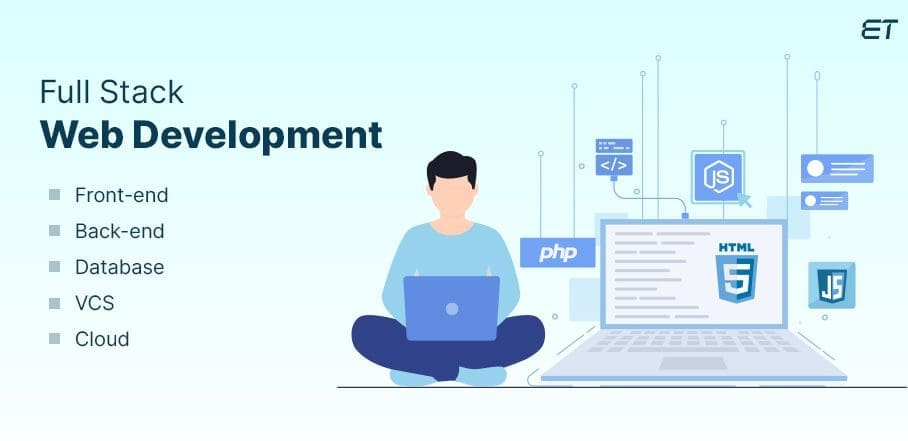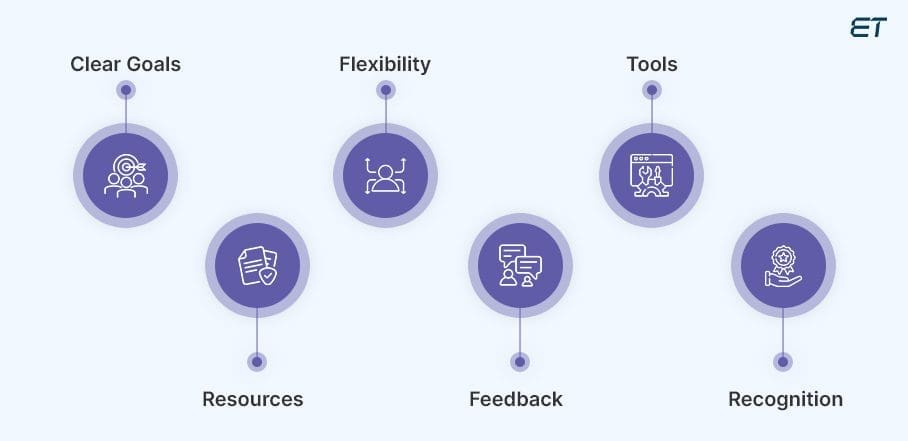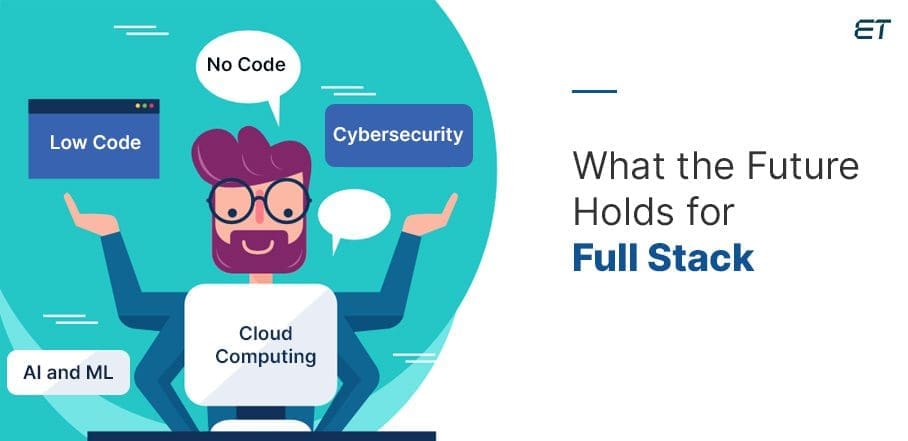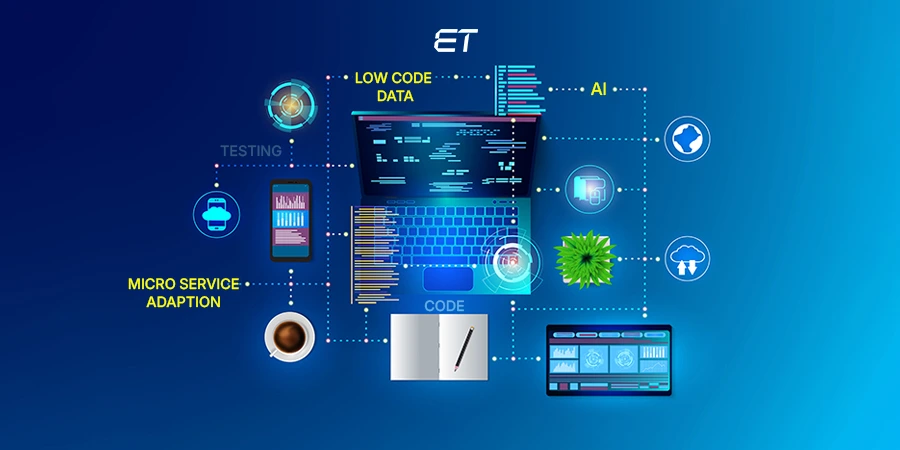
A CTO’s Guide to Full Stack Development
As a CTO, you must be constantly handling numerous responsibilities, from architecting complex systems to aligning technology with business goals. One of the most stubborn challenges is the communication breakdown between front-end and back-end teams. Misaligned expectations, technical debt, and delayed projects can be traced back to this disengagement.
A deep understanding of full stack development can solve such challenges perfectly. By grasping the complexities of user interfaces and server-side logic, CTOs like you can become more effective decision-makers.
So, without further ado, let’s explore how a full-stack web development perspective can equip you to handle complex workflows confidently.
What You Must Know About Full Stack Development?

Full stack development includes the entire scope of a software application, from the basic user interface (UI) to the system database. A full stack developer or programmer is proficient in using both front-end and back-end technologies. These skills allow them to work on all aspects of a project.
Key Components of Full Stack Development
As a CTO, your primary focus should be understanding the crucial areas of full stack web development. Here are the vital pointers to note:
- Front-end development: This aspect focuses on the user interface and experience. Prominent technologies include HTML, CSS, JavaScript, and frameworks like React, Angular, or Vue.js
- Back-end development: This software development involves server-side logic, database interaction, and API development. Standard programming languages and frameworks include Node.js, Python, Ruby on Rails, and Java
- Database management: Full stack developers should have a solid understanding of database structures and querying languages like SQL or NoSQL
- Version control: Proficiency in tools like Git is essential for managing code changes and collaboration
- Deployment: Knowledge of deployment processes, servers, and cloud platforms is beneficial
Let us summarize the main technical facets in the following infographic:
Implementing full-stack development presents an array of benefits. Here are some of the main advantages:
- Versatility
- Efficiency
- Cost-effective
- Improved communication
By understanding these key aspects of full stack development, you can assess the team’s capabilities, make informed technology decisions, and drive successful product development.

Need dedicated full stack developers to augment your team? Then, click here now!
How to Build a Full Stack Development Team?

Building a robust full stack web development team requires a strategic approach. You must begin with project analysis and hire top talent for your business. In this section, we will explain these steps in brief.
1. Define Your Team Structure

Consider the size and technical complexity of your projects when determining the optimal team structure. Ideally, your development team should be a blend of the following professionals:
- Full Stack Developers: These individuals possess a broad skill set and can handle both technical front-end and back-end tasks
- Front-End Specialists: These programmers have deep expertise in user experience and interface design
- Back-End Engineers: Such developers focus on server-side logic, databases, and APIs
- DevOps Engineers: They ensure smooth deployment and infrastructure management
A balanced mix of these roles can create a well-rounded team capable of handling diverse projects.

Want specialized insights on building a solid front-end development team?
2. Hire Talent That Suits Your Requirement

As a CTO, you should look for individuals with a strong foundation and knowledge of front-end and back-end technologies. In addition, they should have the passion for learning new things.
Consider the following qualities:
- Problem-solving skills
- Communication skills
- Adaptability
- Teamwork
A blend of apt technical and soft skills is critical to creating a team environment where different individuals bring constructive perspectives. Non-technical skills are also crucial to creating a work culture that you and your colleagues will enjoy.
3. Build a Culture of Learning

Continuous learning is crucial in the fast-paced tech sector. So, as a CTO, you should encourage your team to explore new technologies, attend conferences, and share knowledge.
Here are some quick suggestions that can help you bolster your entire stack development team:
- Mentorship programs: Pair experienced developers with junior team members
- Technical workshops: Organize internal training sessions on emerging technologies
- Hackathons: Encourage innovation and experimentation
Overall, you can build a solid full-stack development squad by creating a culture that adheres to the Kaizen philosophy.
4. Empower Your Full Stack Development Team

Give your team the autonomy and resources to decide and own their projects. This way, they can work on any full stack web development project briskly.
Here are some pointers that you can consider:
- Define project expectations and outcomes
- Allow for remote work or flexible hours if applicable
- Provide regular feedback and recognition for achievements
Overall, such simple steps can help build a team that covers all the essential facets and experiences less burnout.

Save time by choosing the staff augmentation model instead! Choose our IT Staff augmentation services to fill any full-stack talent gap.
5. Build a Strong Foundation

Finally, it is vital to establish transparent development processes, code standards, and version control practices. These facets contribute to a well-rounded full stack development team.
Here are some main points to consider:
- Agile methodologies: Try using frameworks like Scrum or Kanban for efficient project management
- Code reviews: Implement robust code review processes to ensure quality and knowledge sharing.
- Continuous integration and continuous delivery (CI/CD): Consider automating testing and deployment processes
By following these guidelines, you can build a full stack web development squad equipped to deliver exceptional software products. On the other hand, if you feel this process is lengthy and resource-intensive, choose the outsourcing model.
A reliable IT vendor can save time and resources by supplying readily available full stack developers to work on your project.
Full Stack Development: A Brief Look at the Future Trends

The full stack development segment is evolving continuously. So, to stay ahead, you must anticipate future trends and prepare the teams accordingly. This section sheds light on some developments in brief.
Low-Code/No-Code Revolution
The rise of low-code and no-code platforms is democratizing full stack web development. While these platforms might not entirely replace full stack developers, they will likely influence the role they play. Full stack developers will leverage these tools for rapid prototyping and iterative development.
The Integration of AI and Machine Learning
AI and ML are transforming various industries, and full stack development is no exception. Developers will focus on building web applications that can learn, adapt, and make intelligent decisions.

Need AI experts to work on your project? Choose our AI software development services and get the best quote.
The Cloud Native Imperative
Cloud computing has become the foundation for modern applications. Full stack developers will need to master cloud-native development principles, including containerization, microservices, and serverless architectures.
Cybersecurity as a Core Competency
As cyber threats become increasingly sophisticated, full stack developers must incorporate security into every development lifecycle stage. The common activities include secure coding practices and staying up-to-date with the latest security vulnerabilities.
Overall, by understanding these trends, you can position your organization for success and ensure that the full stack teams can meet the challenges in the future.
Build Your Full Stack Development Team Today!
CTOs like you must possess a deep understanding of full stack development to navigate the complexities of software development effectively. By grasping both front-end and back-end technologies, you can make informed decisions, enhance communication within your team, and accelerate product development.
Building a high-performing full stack web development team requires careful planning, strategic hiring, and a culture of continuous learning. By empowering your team and establishing robust development processes, you can create a foundation for innovation and success.
Would you like to explore specific full stack development challenges or discuss how to implement these strategies in your organization? Let’s connect and discuss your unique needs.
Frequently Asked Questions
1. What are the biggest challenges in managing a full stack development team?
Balancing diverse skill sets, ensuring effective communication between front-end and back-end teams, and staying updated with rapidly evolving technologies are the primary challenges in managing a full stack team.
2. How can a CTO determine if their organization needs to invest in full stack development?
If your organization faces frequent hand-offs between development teams, struggles with project timelines, or seeks to accelerate product development, investing in full stack development can be beneficial.
3. What are the key metrics or parameters to measure the success of a full stack development team?
You should analyze critical metrics like project completion time, code quality, customer satisfaction, developer productivity, and return on investment (ROI).
4. How can full stack development contribute to a company’s overall business strategy?
Full stack development can accelerate time-to-market, improve product quality, enhance customer experience, and foster innovation. All these factors ultimately drive business growth and generate high ROI.





